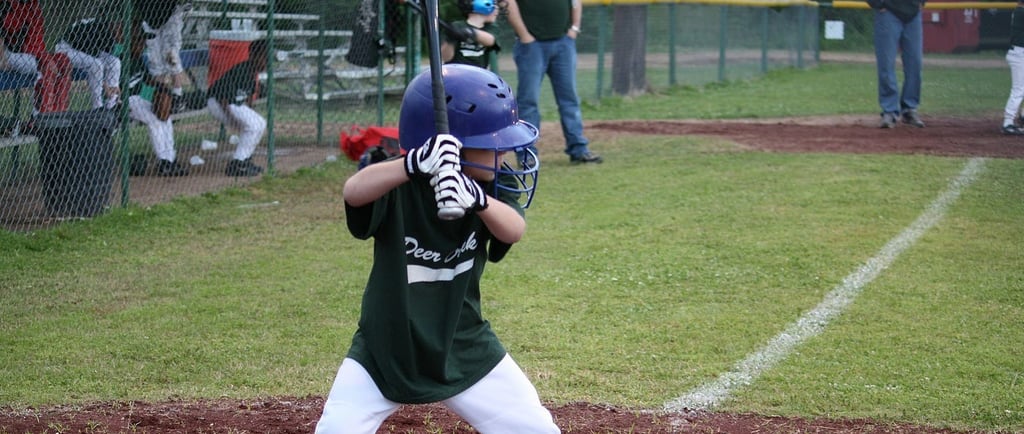How Often Should Youth Baseball Players Hit Each Week?
How many times a week should youth players be hitting? Discover the right training frequency for skill development, confidence, and long-term success at the plate.


It’s a question we hear all the time:
“How often should my son/daughter be hitting?”
Should it be every day? Just once a week? Should they rest after games? Is more always better?
The truth is, there’s no one-size-fits-all answer. The ideal hitting frequency depends on age, goals, season, workload, and how your athlete responds to training. But there are clear guidelines that can help you build a smart, sustainable routine.
In this article, we’ll break down how often youth baseball players should hit, what kind of hitting sessions to include, and how to avoid the burnout that comes from overtraining.
Why Hitting Frequency Matters
How often a player trains their swing directly impacts:
Skill development
Timing and rhythm
Confidence at the plate
In-game consistency
But more hitting isn’t always better. Without rest, variety, and proper focus, players can develop bad habits, overuse injuries, or mental fatigue.
The key isn’t just quantity — it’s quality, consistency, and intention.
General Hitting Frequency Guidelines by Age
Here’s a rough guide for how often youth athletes should be hitting, based on age and development stage:
Ages 7–10
• 2–3 short sessions per week
• Focus: fundamentals, fun, rhythm
• Duration: 20–30 minutes per session
Ages 11–13
• 3–4 sessions per week (including team practices)
• Focus: timing, contact quality, developing approach
• Duration: 30–45 minutes per session
Ages 14–16+
• 4–5 sessions per week (with variation in intensity)
• Focus: mechanics, exit velocity, situational hitting, pitch recognition
• Duration: 45–60 minutes per session
Remember — team practices, games, and cage work all count toward weekly hitting volume. It’s not about adding more on top of everything — it’s about managing the overall load wisely.
Types of Hitting Sessions to Include
To keep development balanced and avoid burnout, mix up the type of work your athlete does:
1. Tee Work (Low Intensity)
Great for focusing on mechanics, contact points, posture, and feel. 10–15 minutes can be highly productive.
2. Front Toss / Flip Work (Medium Intensity)
Builds rhythm and barrel control. Useful for working on timing and swing path against a moving ball.
3. Live Arm or Machine (High Intensity)
Simulates game speed and helps hitters learn to adjust to velocity and off-speed. Best in moderation — 1–2x/week.
4. Game-Like Situational Work
Compete with pitch counts, simulated ABs, or hit with an objective in mind. Trains decision-making and approach.
5. Recovery/Feel Days
Some days should focus only on feel, tempo, and relaxation — especially after high workload or tough weekends.
Warning Signs of Overtraining
More isn’t always better. Watch for these signs that your hitter may need a break:
Decline in swing quality or bat speed
Loss of focus or motivation
Increased frustration or negative self-talk
Soreness in wrists, shoulders, or lower back
Dreading going to the cage
Rest is a weapon. A day or two off often leads to better feel and faster improvement.
When to Ramp Up (and When to Scale Back)
Here’s how hitting frequency should shift depending on the season:
Offseason / Preseason
Aim for higher frequency (3–5x/week) to rebuild mechanics and build strength and speed.
In-Season
Lower volume, higher quality. Focus on maintaining timing and confidence. 2–3 targeted sessions per week is usually enough.
Post-Tournament
Give the body and brain a break. Recovery days are essential — especially after high pitch volume or long weekends.
During Slumps
Don’t panic and hit more. Focus on feel, simplify approach, and prioritize low-pressure reps over volume.
Final Thoughts
There’s no perfect number of weekly hitting sessions — but there is a sweet spot for every player.
The goal is to train often enough to stay sharp, but not so often that mechanics break down or motivation fades. If your athlete is engaged, making quality contact, and enjoying the process, you're on the right track.
Not sure how often your athlete should be hitting based on their goals, age, and schedule? Reach out to Swing Lab. We’ll help you build a plan that’s structured, sustainable, and built for long-term growth.
from: pixabay
Excuses don't get walk-offs
get in the lab
info@lexasport.com
+1 (972) 638-0872
© 2025. All rights reserved.
NTX Swing Lab is a division of LEXA Sport
